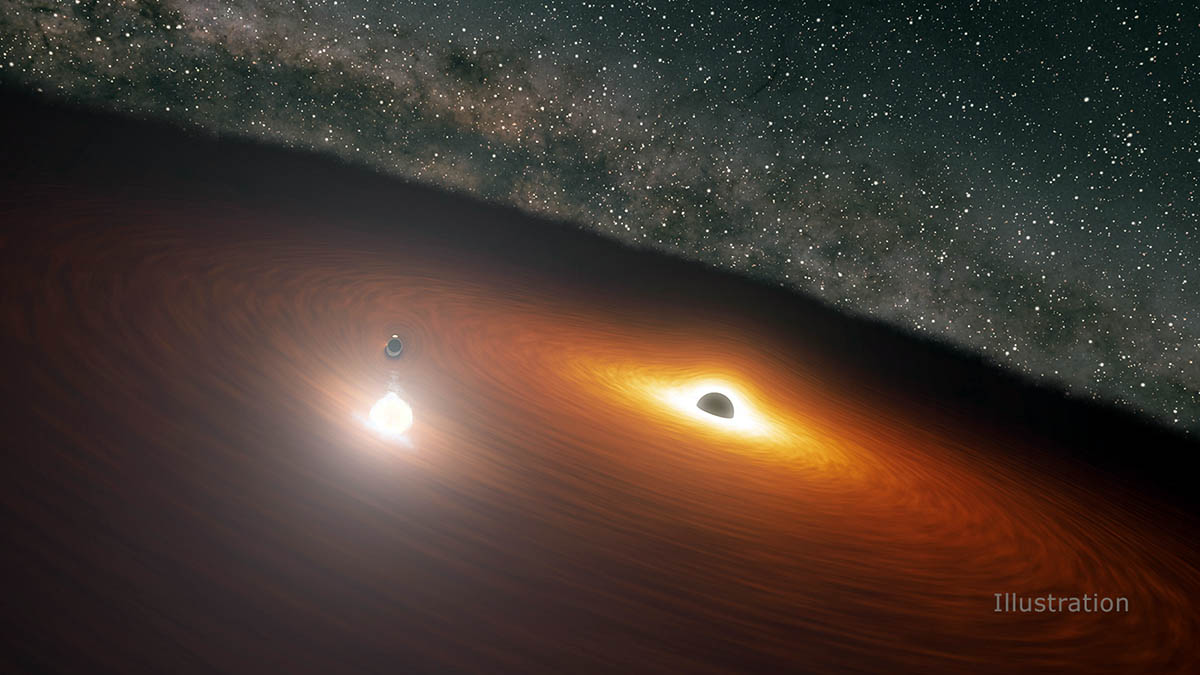This image shows two massive black holes in the OJ 287 galaxy. The smaller black hole orbits the larger one, which is also surrounded by a disk of gas. When the smaller black hole crashes through the disk, it produces a flare brighter than 1 trillion stars. (NASA/JPL-Caltech)
Home This image shows two massive black holes in the OJ 287 galaxy. The smaller black hole orbits the larger one, which is also surrounded by a disk of gas. When the smaller black hole crashes through the disk, it produces a flare brighter than 1 trillion stars. (NASA/JPL-Caltech) This image shows two massive black holes in the OJ 287 galaxy. The smaller black hole orbits the larger one, which is also surrounded by a disk of gas. When the smaller black hole crashes through the disk, it produces a flare brighter than 1 trillion stars. (NASA/JPL-Caltech)


